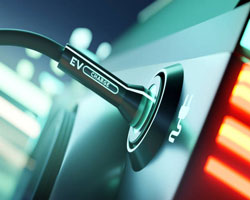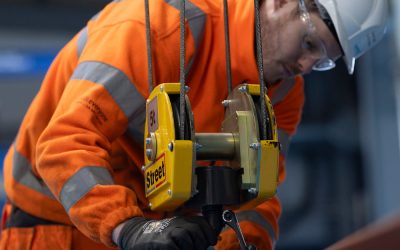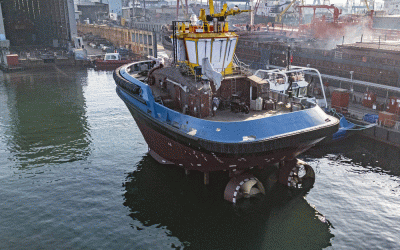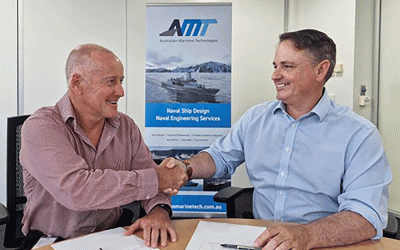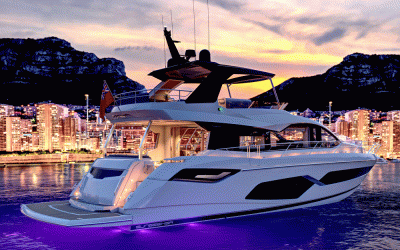With a UK ban on internal combustion engine (ICE)-powered cars set to enter force in 2030, ro-ro ferry operators can expect electric vehicle (EV) carriage to become the norm. However, while EVs running on lithium-ion (Li-ion) batteries could lower emissions by up to 69% compared to petrol-fuelled cars, according to a 2021 study by the International Council on Transportation, there’s a downside: when EVs catch fire, the consequences can be far more drastic than is the case with ICE-reliant models.
The problem has prompted legal firm Watson Farley & Williams (WFW) to issue an article warning ro-ro ferry operators that the carriage of EVs requires distinct fire safety management considerations, many of which may be unfamiliar to crews at present. Mike Phillips, WFW London dispute resolution partner, and David Handley, master mariner/of counsel, write: “The component materials of the batteries mean that the fires are very energetic, and traditional firefighting techniques do not necessarily work. Statistically, the estimated failure rate – and, therefore, risk of combustion – of an individual battery cell is one in 10 million. However, when you consider that an average EV contains approximately 7,000 cells, the risk increases significantly.”
Phillips and Handley continue: “ICE vehicles are carried with the minimum amount of fuel to reduce the risks as much as possible. The component that carries the fire risk in an EV cannot be removed; the battery cannot be drained of electrolyte. An EV has chemical components that can initiate and sustain a fire; often a very energetic fire. In addition, ‘normal’ firefighting techniques are less effective in fighting EV fires. Two common suggestions are either to let the vehicle burn out or submerse it in water. Neither is likely to be appropriate in the confines of a ship.”
While shoreside blazes are typically countered with fresh water, shipboard mains are pressurised with seawater, which is better at conducting electricity than fresh water. Toxic Li-ion battery smoke could prove lethal if it accumulates within an enclosed onboard vehicle deck, and it is therefore necessary to issue adequate gas-tight suits and self-contained breathing apparatus to all crew tasked with tackling the blaze.
David Handley tells Ship & Boat International that, in his opinion, the maritime sector is not as informed as it could be with regard to the potential risks surrounding Li-ion battery power. “This is an emergent technology for these uses, even though Li-ion batteries are decades old now,” he says. One question that may arise is that, if batteries pose a risk when installed aboard EVs, is there a similar risk when they form part of a vessel’s propulsive arrangement – whether hybrid-electric or pure-electric? “The answer is yes and no,” says Handley. “A battery is a battery is a battery, so the inherent risks are the same. The issue that makes vehicles potentially more difficult is they are difficult to get to and are not being monitored as part of the vessel’s systems. Detection of fires, therefore, relies on the remote system that is not connected to the battery, which may result in slower detection rates.
“In addition, battery compartments can be better protected with systems that will effectively fight the fire. The issue then is alternative power supply, and the vessel will be permanently immobilised. Segregation of battery spaces may reduce that issue provided that one space is not exhausted before switching to the next, as would happen with fuel tanks.”
Returning to the carriage of EVs, Phillips and Handley advise that ferry companies’ safety management plans need to account for these new vehicle types. “If crews are not aware that fighting an EV fire requires a different technique to that employed in fighting a conventional fire on board, it is easy to see how an incident could lead to a total loss,” they write. “The evidence indicates that current suppression and drenching systems will not be sufficient for this new risk.” New systems could include high-fog systems, fitted at deck level, and thermal cameras, to spot overheating at an early stage.
On the training side, crew members should receive access to specialist firefighting and safety courses as an “essential part of the training”, Phillips and Handley state. “Alterations to SOLAS are likely to be required in the long term,” they say, adding that it may even become necessary, time-consuming though it may be, for operators to check the battery health of EVs prior to leaving port.
